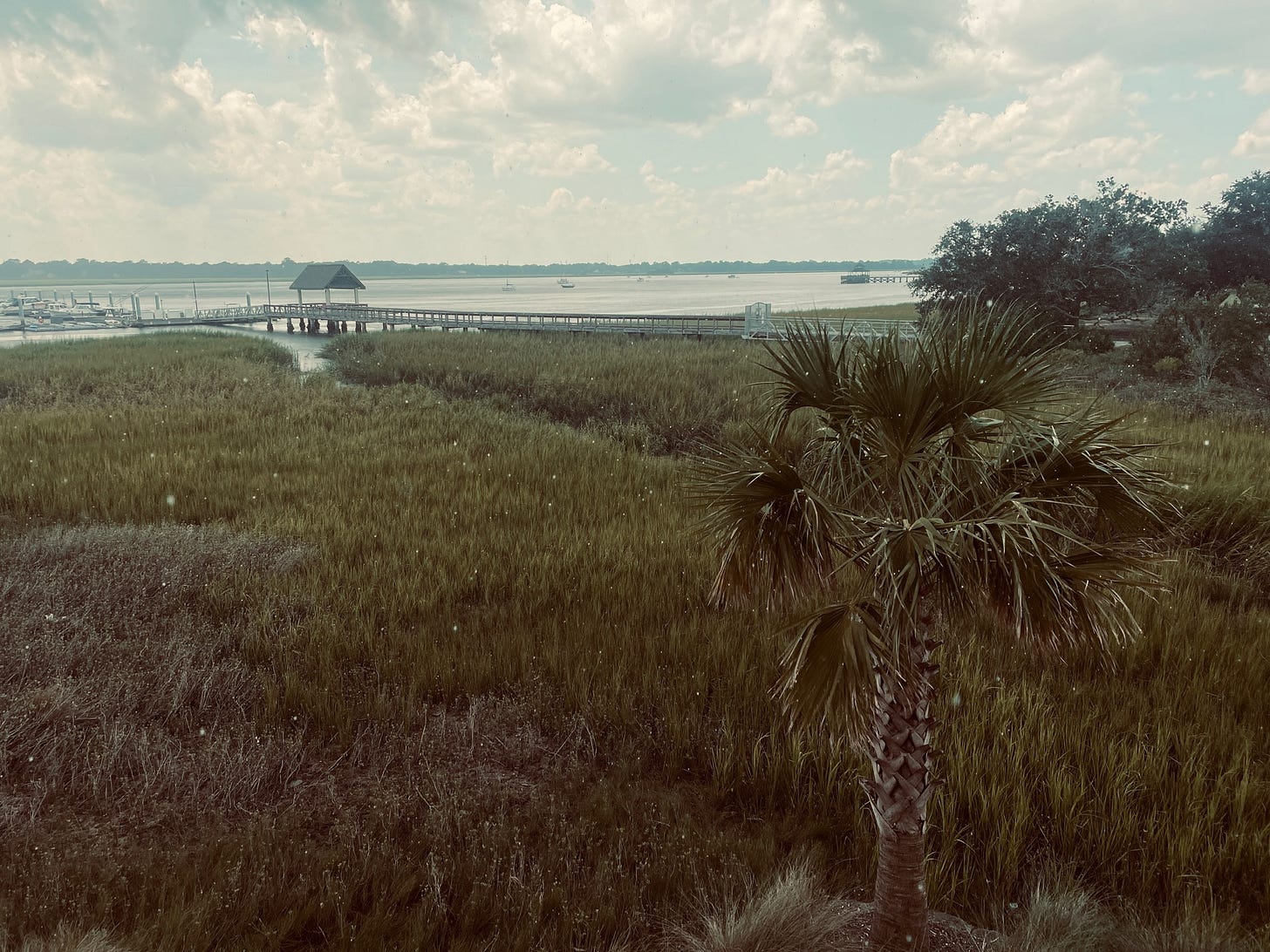The marsh is still. In mere seconds, the landscape changes from the vibrant glow of the sun’s reflection on the glassy water illuminating the cottony clouded bright blue sky to various hues of coastal sepia, where the tips of tall grasses are kissed with gold and the spongy marsh floor is tinted rust.
The soft, summer rain falls and the sleepy marsh awakens. An egret lands, ready to hunt. Are these misty conditions ideal for a fresh catch? I watch as it extends its neck out and retracts back in, a strategy to startle the fish from their state of stillness as they remain tucked safely in the base of the reeds, and then in a flash, the egret plunges forth and wins its meal.
The same rain keeping the boats free from their toil on the waters is busy supplying perfectly portioned summer refreshment as drops slide down the tall grasses, past the periwinkle snails holding on with their sticky mucous, and reaching the padded marsh floor, stirring up the vegetation for the square back crabs to feast.
As quickly as the rain came in, I watch it move out. The sun’s crepuscular rays fight through gray masses in the sky, producing a glory from heaven. The palms drip twinkling sparks of white into the grasses as their chartreuse coloring comes back with the sun.
Beyond the marsh, the gentle waterways leading to the ocean are abruptly interrupted by a boat ripping by, past the egret having a meal, past the hundreds of periwinkles clinging to the spartina blades and the square back crabs creeping sideways across the muck and retreating quickly in and out of sight.
The rain is over. The sun shines on. And the marsh is still again.





